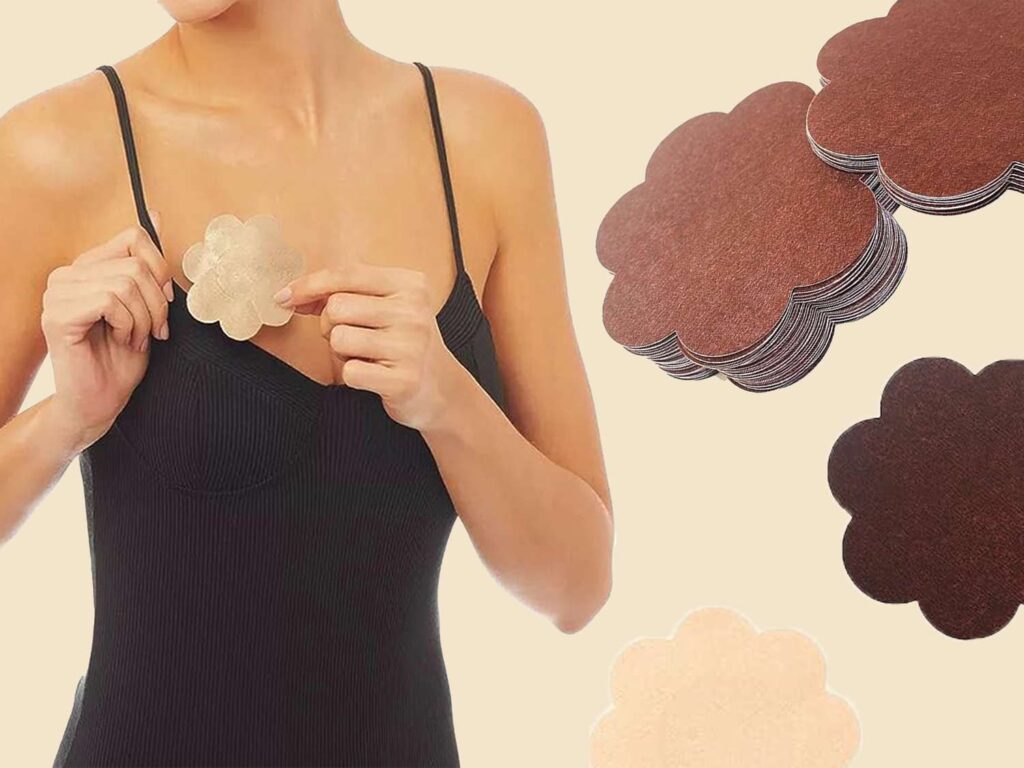Nipple covers, often referred to as nipple concealers or pasties, have become an essential wardrobe accessory for individuals seeking both comfort and confidence in their clothing choices. These discreet and versatile solutions offer a practical way to address concerns about nipple visibility, ensuring a seamless and polished appearance in various outfits. In this comprehensive guide, we will explore the evolution of nipple covers, their diverse uses, materials, and how they have become a fashion staple for individuals of all genders.
The Evolution of Nipple Covers
Nipple covers have a long history, dating back to ancient civilizations where various forms of breast coverings were used for modesty and comfort. Over time, these coverings have evolved, adapting to changes in fashion, societal norms, and technological advancements. In recent years, nipple covers have gained popularity as an indispensable accessory for modern fashion enthusiasts.
Purpose and Usage
The primary purpose of nipple covers is to provide a discreet solution for individuals who prefer to conceal their nipples, especially in situations where traditional bras may not be suitable. Common scenarios include wearing sheer or lightweight fabrics, backless dresses, or clothing with low necklines. Nipple cover’s offer a practical alternative to traditional bras, ensuring a smooth and natural appearance without sacrificing comfort.
Materials and Construction
Nipple covers are crafted from a variety of materials, each offering distinct benefits in terms of comfort, durability, and adhesiveness. Common materials include silicone, fabric, foam, and gel. Silicone nipple cover’s are popular for their soft and natural feel, while fabric and foam options provide a breathable alternative. The adhesive backing ensures a secure fit, allowing wearers to move confidently without worrying about slips or discomfort.
Variety of Shapes and Sizes
Nipple cover’s come in a range of shapes and sizes to cater to diverse body types and outfit preferences. Circular pasties are the most traditional shape, providing reliable coverage for the nipple area. However, advancements in design have led to the creation of innovative shapes, such as petals, hearts, and ovals, offering more versatility in outfit choices.
Fashion and Functionality
Beyond their practical use, nipple covers have also become a fashion statement. With a wide array of designs, colors, and patterns available, individuals can choose nipple cover’s that complement or enhance their outfit. Some even feature decorative elements like lace, sequins, or unique textures, making them an accessory rather than just a functional undergarment.
Tips for Proper Application and Care
To maximize the effectiveness of nipple covers, proper application and care are essential. Before applying, ensure the skin is clean and dry to optimize adhesion. When removing, do so gently to avoid irritation. Many nipple cover’s are reusable, and proper care, such as cleaning with mild soap and water, can extend their lifespan. Always follow the manufacturer’s instructions for care and use.
Inclusivity and Gender Neutrality
Nipple covers are inclusive accessories that cater to individuals of all genders. As societal norms evolve, fashion becomes more diverse and inclusive, breaking away from traditional gender expectations. Nipple cover’s play a role in this evolution by providing a solution that transcends gender boundaries, allowing anyone to make choices based on personal comfort and style preferences.
The Empowerment of Choice
Nipple covers empower individuals to make choices about their bodies and fashion without conforming to societal expectations. The acceptance and normalization of nipple cover’s contribute to a broader conversation about body positivity and self-expression. By providing options for nipple concealment, individuals can confidently wear the clothing they love, free from judgment or scrutiny.
Environmental Considerations
As sustainability becomes a focal point in the fashion industry, some nipple cover brands are embracing eco-friendly materials and manufacturing processes. Reusable nipple covers made from sustainable materials contribute to reducing waste and offer a more environmentally conscious option for consumers who prioritize eco-friendly choices in their wardrobe.
Conclusion
Nipple covers have evolved from simple breast coverings of ancient times to a contemporary fashion accessory that combines functionality with style. With a diverse range of materials, shapes, and designs, nipple covers cater to a wide audience seeking comfort, confidence, and self-expression. As societal attitudes toward body positivity and inclusivity continue to progress, nipple covers remain an empowering choice for individuals of all genders, providing a simple yet effective solution to enhance their wardrobe and personal style.







